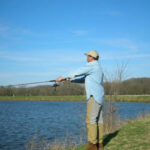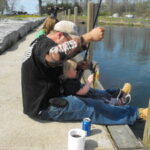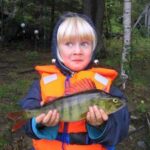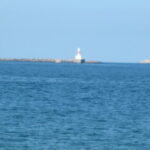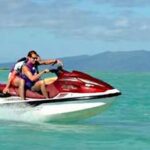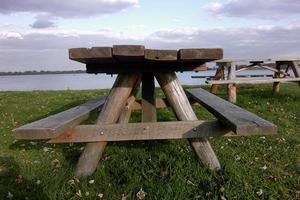Fishing for walleye without a boat is a unique challenge, and it can be extremely frustrating. Many veteran anglers won’t even bother going after walleye without a watercraft to access their favorite holes. But if you’re one of the boatless millions like me and you’re dead-set on hunting a super-tasty walleye, there are several things you can do to increase your chances.
First and foremost, I strongly recommend fishing a river instead of a lake. If a land-locked fisherman can find a river with walleye in it, his chances are already much better than those of an equally-skilled fisherman who tries to fish from the shore of a lake. A river becomes progressively deeper much faster than a lake does, so fishing from a riverbank makes it easier to get your lure into the deep holes where walleye lurk. If you’re in or around the Northern Midwest, many larger Great Lakes tributary rivers will give you access to walleye that can potentially be landed from the shore.
Once you’ve found your river, you’ve got to find the fish. Here’s a hint: look down. Walleye are almost always going to be deep. In still waters, they often rest right on the bottom and really won’t move vertically at all until nightfall. If the waters are more turbulent, they’ll move around more, but this will still be mostly lateral movement; they’ll continue to stick pretty close to the bottom until the sun goes down. You might find them a little closer to the surface if it’s overcast or cold, but for the sake of simplicity, let’s assume they’re always hanging right around the bottom. Walleye like to be cold, but-unlike a lot of other freshwater game species-they rely primarily on depth instead of shade to keep cool. Because of this, casting into weed patches or under rocky outcroppings isn’t going to benefit you as much as it would if you were going after bass, for example.
If it’s especially hot, you’ll want to move closer to the mouth of your river. Those who fish for walleye in Lake Superior tributaries often move into the lake itself during particularly hot spells. When the walleye feel that they’re getting too hot, even at the bottom of the river, they’ll migrate into the colder lake water. If you can find any sort of pier or dock jutting out into a lake near the mouth of a large river, try casting one line into the lake side and another into the river water. Even in the cold, deep lake, start out fishing towards the bottom.
My favorite rig for catching walleye from shore is incredibly simple, and it revolves around a floating jighead in either fluorescent yellow or fluorescent green. Rig the floater it with a leech-try to pick a lively one as the natural motion of the struggling leech is crucial to attracting lazy walleye during the day. If you can’t get leeches, nightcrawlers are often effective. Put a split-shot sinker about 6 to 12 inches down the line from the jighead-this may seem close, but you need to keep the jig itself anchored close to the bottom, and 6 to 12 inches should be just enough to keep it up out of the weeds and muck. Use the smallest sinker you can get away with; if you have too much weight anchoring the bait down, it may be hard to even notice tentative bites. With a floating-jig-and-sinker rig, you also risk missing the action if you let your line go slack, so try to keep things pretty taut.
Once you’ve got your rig put together, cast it into the deepest water you can find. If you’re fishing a big river, this is usually pretty simple to figure out: the closer to the middle of the river, the deeper the water. But there are inevitably going to be “secret holes” in any body of water, and it never hurts to ask a local’s advice if you’re fishing out-of-town.
If you want to take a more proactive approach than letting a leech and a jighead do all the work for you, try a little cast-and-retrieve with a plain-ol’ crawler harness. Again, yellow and green are good colors for the harness’ spinner, and I prefer a leech to a crawler. Make sure to put plenty of weight on this rig, as it can be tricky to keep such a light setup down at the bottom where you want it. After you cast, give the rig some time to sink-even let it settle on the bottom-before you begin your retrieval.
While these techniques should give you a good starting point, fishing for walleye without a boat is the same as any other style of fishing: experimentation and adaptability are key. Bring along jigheads and spinners in several different colors. And if you don’t find any action at the bottom, don’t be afraid to move your sinker away from the jighead and float your leech up a few feet.


